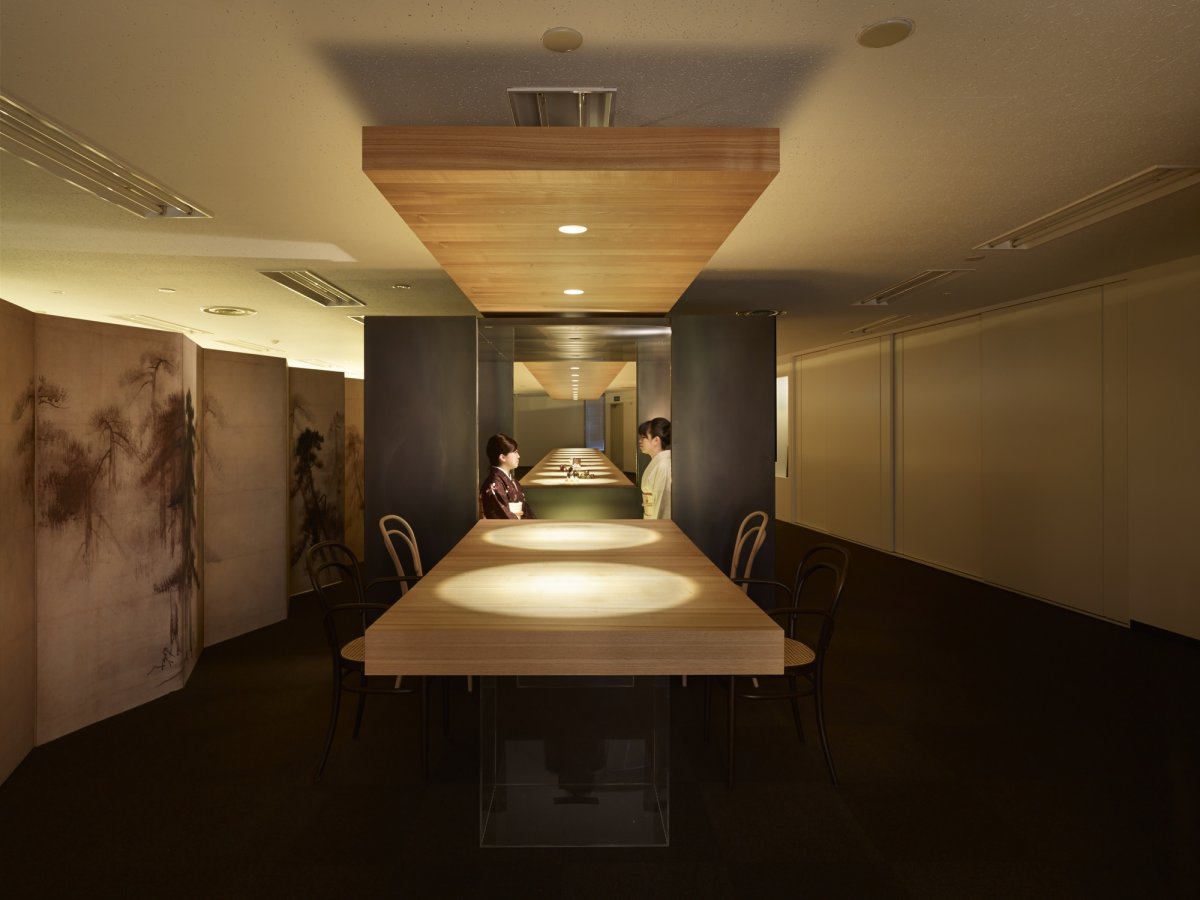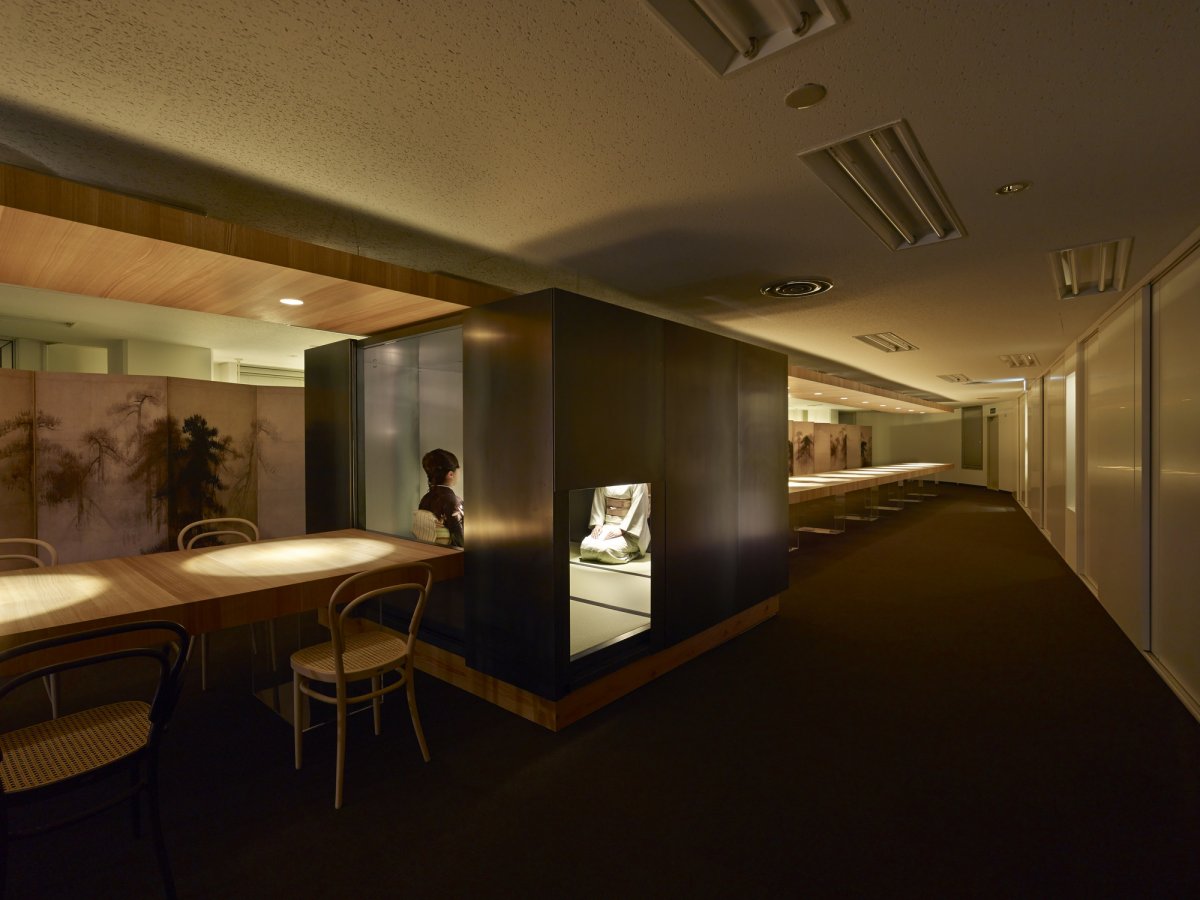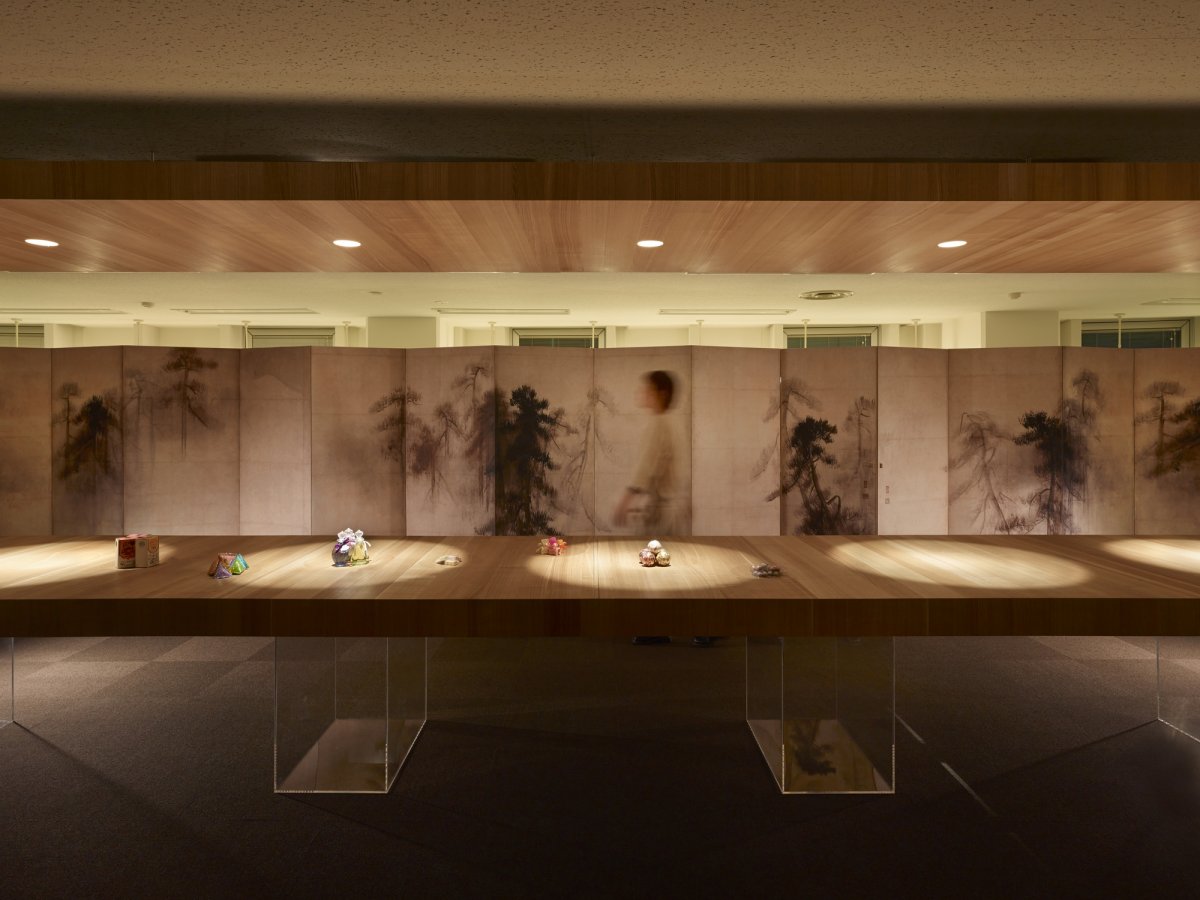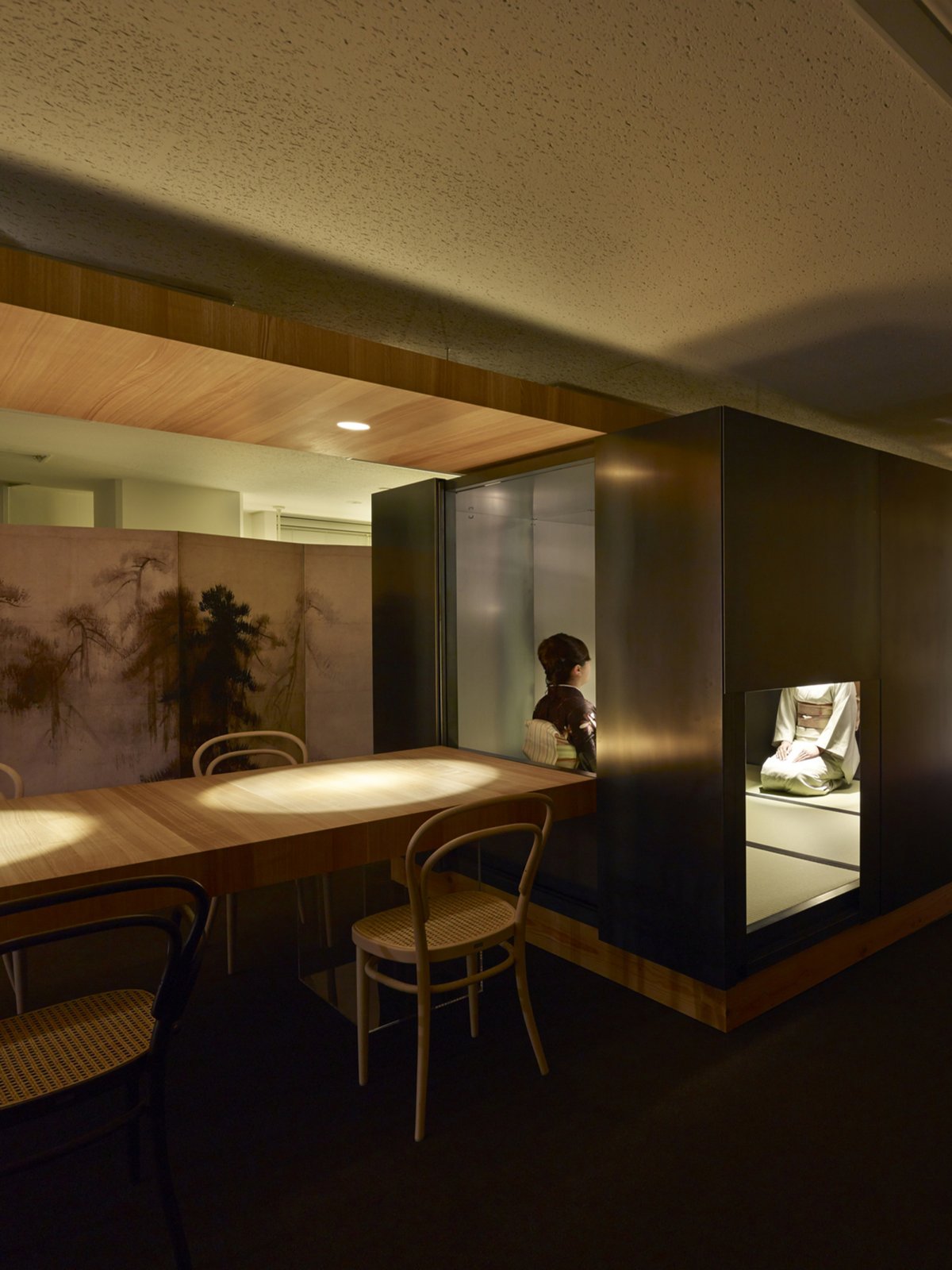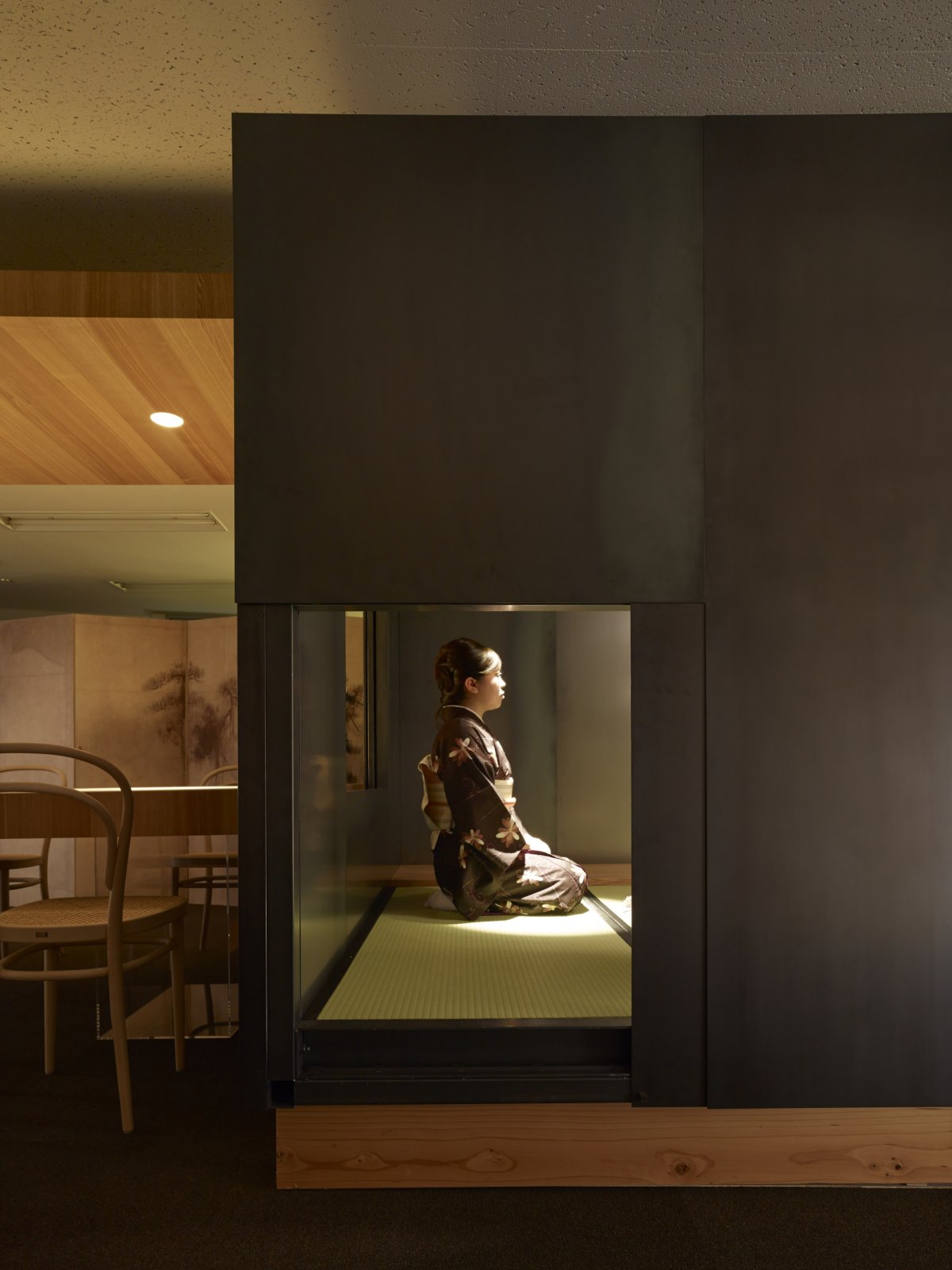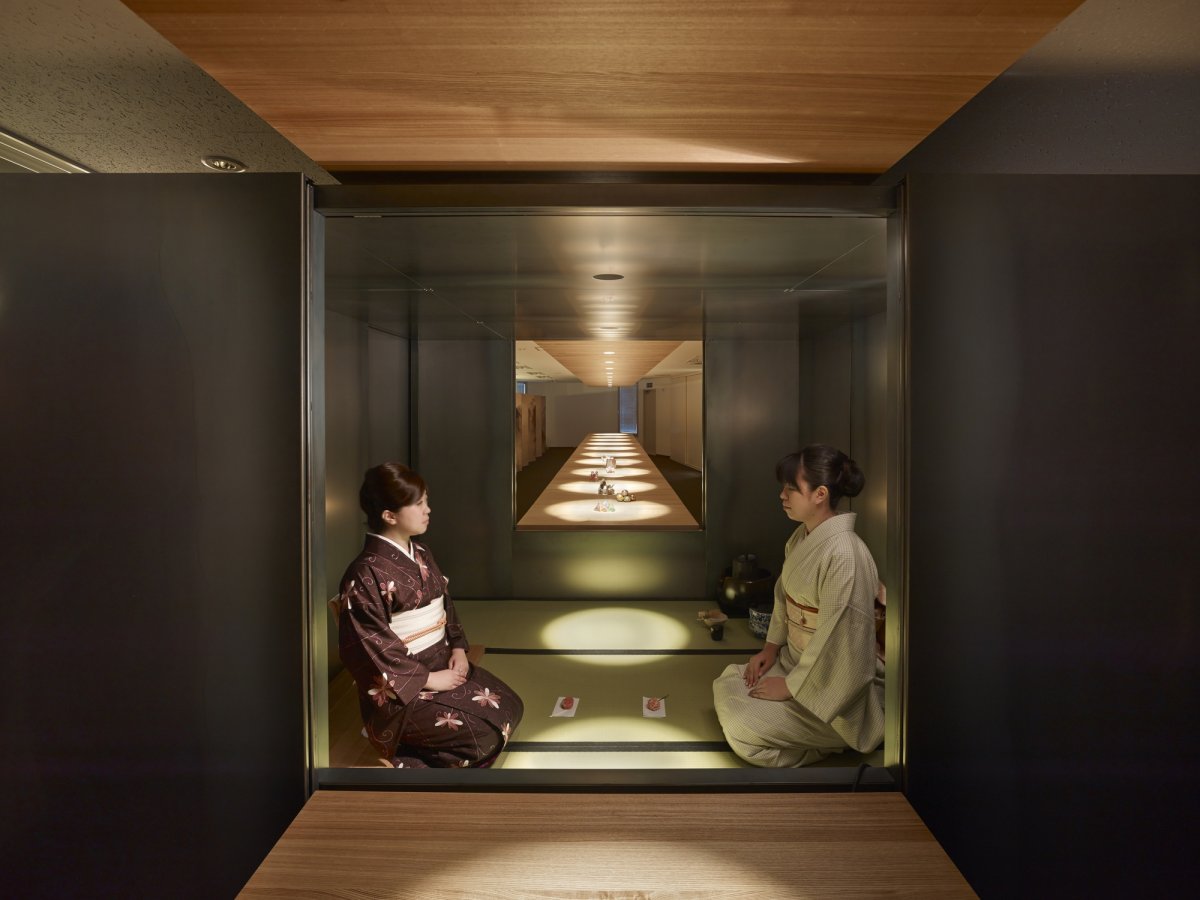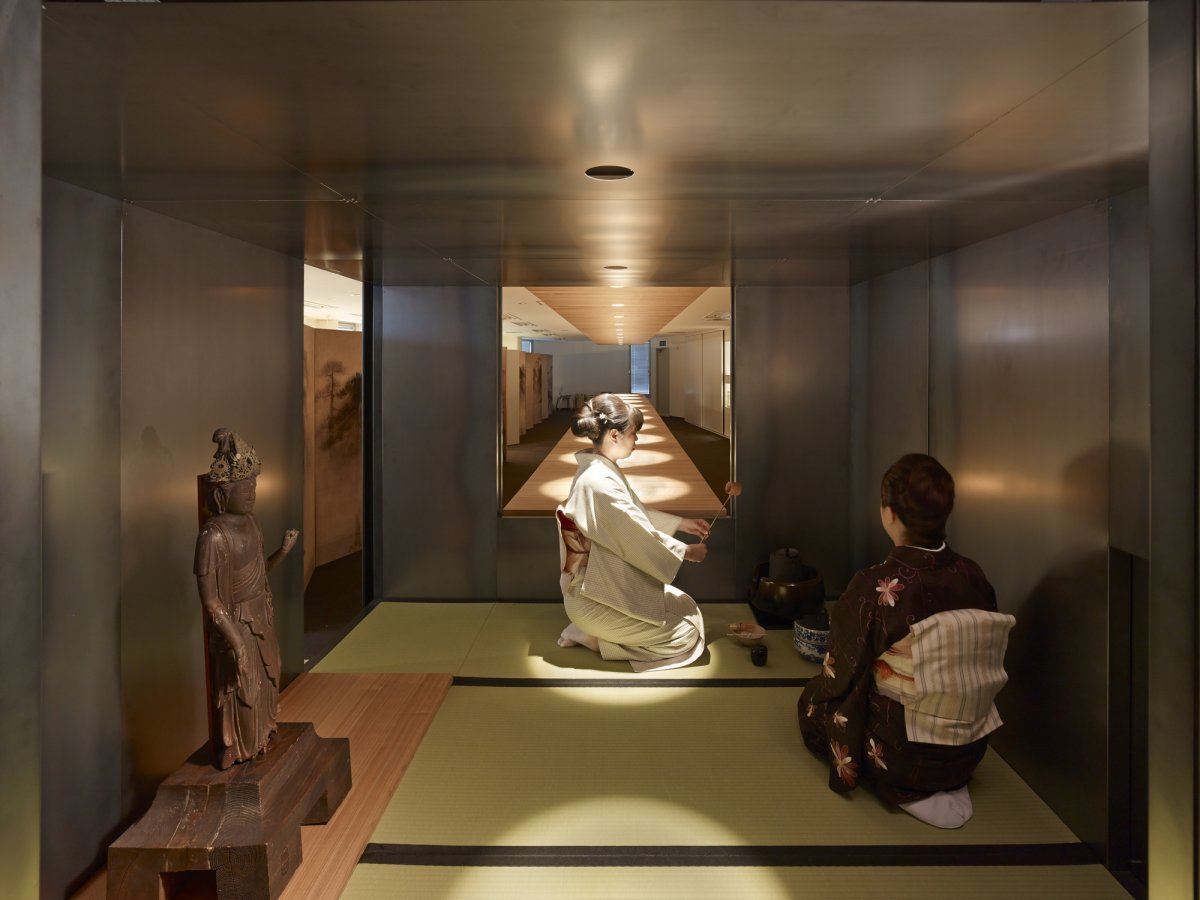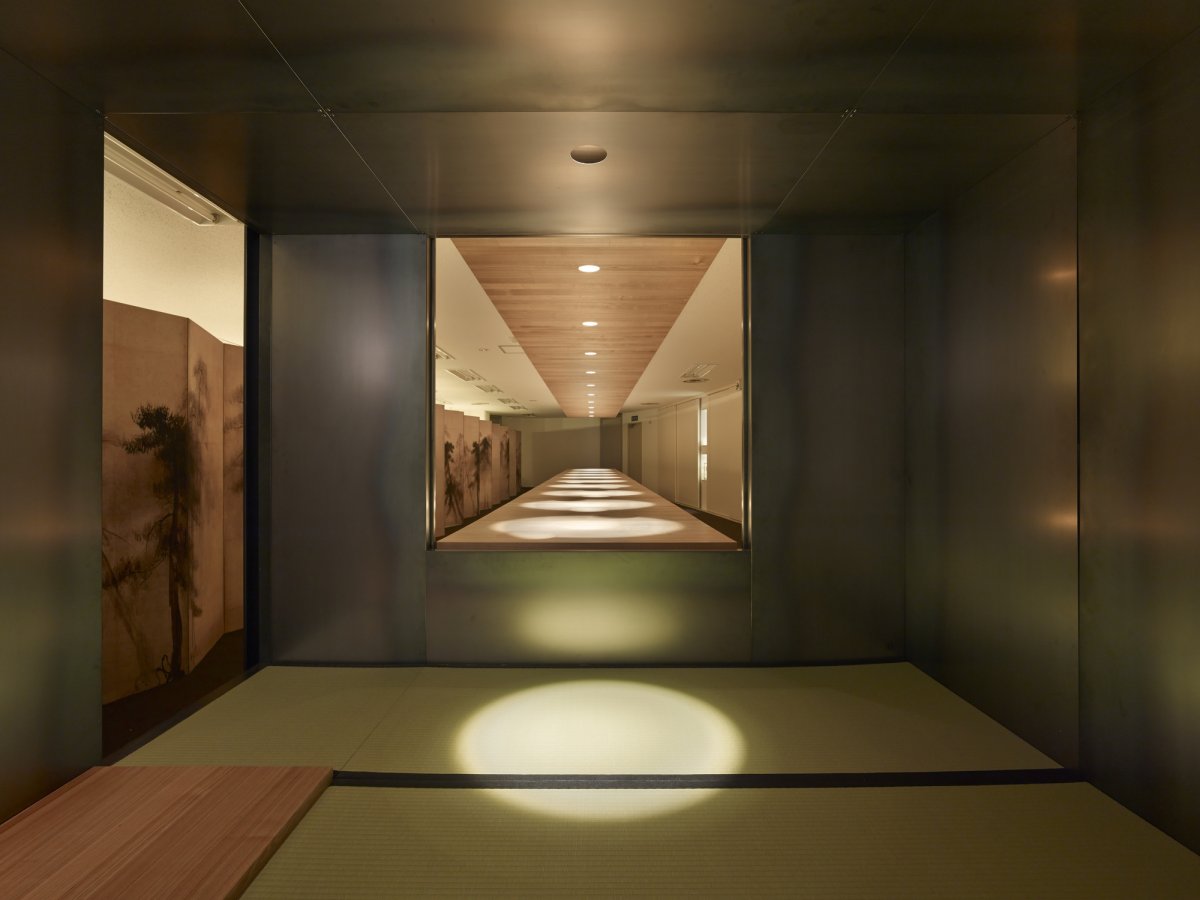
The Iron Tea Room is housed in the Tokyo office and gallery of Charley, a company that designs and sells "Zakka," which can be loosely defined as stylized, everyday objects. There is a 17m-long table in the teahouse in front of a long folding room partition bearing an image of hasegawa's pine tree. While the client didn't directly mention Zakka or Japanese style in their discussions, design studio Fujiwaramuro Architects felt these were themes for the gallery and incorporated them into their design proposal.
Zakka is described as "a Japanese commodity needed for modern life related to fashion, architecture or interior design, with maximum emphasis on satisfaction, while Zakka is part of Japanese culture. It has no English equivalent and conjures up ideas of peace, calm, exquisite workmanship and an antidote to the stresses of modern life. On the client side, something to consider is that Iron Tea Room's decision stems from the question of what role a gallery plays in a company focused on Zakka culture.
On the design side, the design studio tries to answer the question of how to connect the teahouse to Zakka. The Iron Tea Room consists of a skeleton surrounded by black Iron plates, which were formed by allowing the oxides formed when the Iron was rolled to remain on the surface. Because the parts are held together by powerful magnets and bolts, the tea room is easy to take apart. In this deconstructive and mobile sense, it has a certain Zakka quality.
The location of the Iron Tea Room looks as if it has been impaled by a 17-metre-long table. Fujiwaramuro Architects envisioned Zakka beginning on this long table, the teahouse almost as another Zakka collection. They hope that when visitors enter the teahouse and look out at the Zakka display, they will immerse themselves in the scene, as if they had become Zakka themselves.
- Architect: Fujiwaramuro Architects
- Photos: Toshiyuki Yano
- Words: Gina

